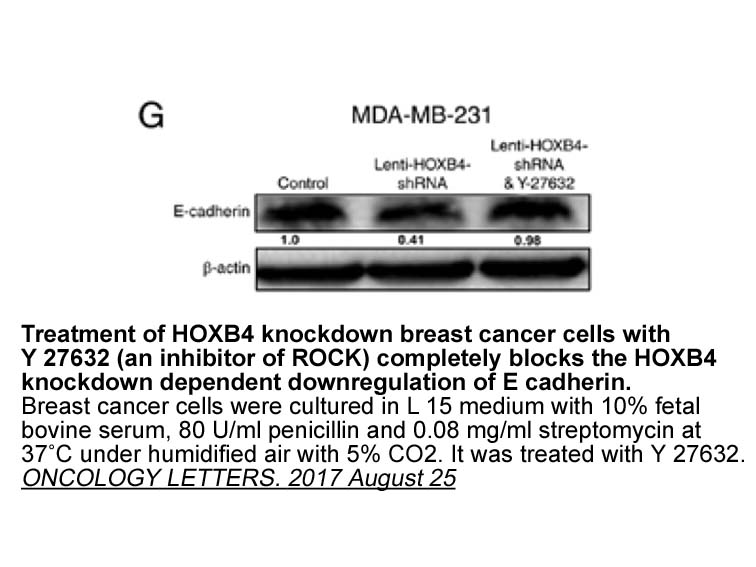Archives
Compared with the tetrazole derivative the potency
Compared with the tetrazole derivative , the potency of analogs – was 3- to 17-fold improved. Of the range of heterocycles prepared, 1,2,4-thiadiazol-5(4)-one and 1,3,4-oxadiazol-2(3)-one showed the best potencies of 0.52μM and 0.61μM, respectively. Introduction of a second hydrogen bond donor, such as in heterocycle caused a significant loss of potency. Substitution of the nitrogen of at the 2-position resulted in improved potency, increasing with steric bulk and lipophilicity of the substituent (see –).
However, only 1,2,4-oxadiazol-5(2)-thione and the corresponding 1,2,4-oxadiazol-5(2)-one were characterized by aqueous solubilities of ca. 300mg/L. The oxadiazol-one showed a higher stability in rat liver hepatocytes than oxadiazolthione (98% vs 69%). Thus, 4-P-PDOT synthesis was progressed further to pharmacokinetic and pharmacological in vivo investigations. Compared to BAY 41-8543 improved pharmacokinetics in rats were observed regarding exposure, clearance, and oral bioavailability ().
In conscious spontaneously hypertensive rats, oral administration of resulted in a long-lasting and dose-dependent blood pressure decrease ().
In conclusion, we have synthesized a novel series of acidic heterocycle-substituted 1-pyrazolo[3,4-]pyridines. Lead optimization resulted in the identification of oxadiazol-one , which showed the expected profile of an sGC stimulator combined with a favorable pharmacokinetic and physicochemical profile and improved solubility. Further in vivo characterization of will be reported in due course.
The relaxation/inhibition induced by nitric oxide donors and atrial natriuretic factors results from their ability to respectively activate soluble or particulate guanylate cyclases, leading to accumulation of cyclic guanylate monophosphate., , , Guanosine 3′5′-cyclic monophosphate induces relaxation of both vascular, and nonvascular tissues by various mechanisms, including decreasing intracellular Ca levels mediated by cyclic guanylate monophosphate–dependent protein kinase or decreasing myosin light chain phosphorylation. An -arginine–nitric oxide–cyclic guanylate monophosphate system has been shown to regulate the contractile activity of rat and human uterine smooth muscle cells., , According to these studies, relative quiescence of the uterus during gestation results from a nitric oxide–mediated inhibition of myometrial contractility until term, when a refractoriness to nitric oxide occurs. The change in nitric oxide suppression is thought to be due in part to the down-regulation of the second messenger effector system., ,
During human and rat pregnancy, concentrations of atrial natriuretic factor in the blood, , and the amount of atrial natriuretic factor receptors, are increased compared with the nonpregnant state, presumably as a response to increased sex hormone levels. The inhibitory effect of atrial natriuretic factor on spontaneous contractions of isolated virgin female rat uteri was concentration related, although the concentrations were higher than those found in plasma. Refractoriness to atrial natriuretic factor–induced inhibition of pregnant rat uterine contraction was noted near term.
Activation of either soluble or particulate guanylate cyclases leads to increases in cyclic guanylate monophosphate levels., , Soluble guanylate cyclase is considered important for maintaining relative uterine quiescence during pregnancy, , ; however, little investigation has been done on the role of particulate guanylate cyclases in regulating uterine contractile activity. The aim of the study is to compare the effects of agents that stimulate either the particulate or soluble forms of guanylate cyclases on the spontaneous contractions of the rat uterus at different stages of gestation.
Material and methods
Results
Atrial natriuretic factor concentration dependently inhibits spontaneous contractions of rat uterin e rings both at midgestation and term. The inhibition starts at a concentration of 10–8 mol/L and reaches 40% of basal activity at 10–7 mol/L—the final concentration used in these experiments (Fig 1).
e rings both at midgestation and term. The inhibition starts at a concentration of 10–8 mol/L and reaches 40% of basal activity at 10–7 mol/L—the final concentration used in these experiments (Fig 1).